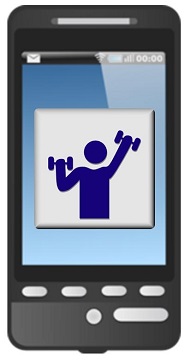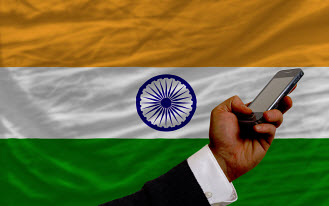The deal was just publicly confirmed between TapJoy and Nido Labs and its popular fitness apps.
A partnership has just been formed between the popular mobile marketing network, Tapjoy, and the creator of Alpha Trainer, Nido Labs, in order to provide consumers with an entirely new way to sign up for their own workout programs.
There is tremendous potential in this deal as Tapjoy already reaches up to 435 million people every month.
This, in combination with the fact that Nido Labs’s Alpha Trainer is among the highest grossing mobile fitness applications currently available, means that the mobile marketing network partnership is a powerful one. It will also mean that consumers will have a new opportunity to obtain an advanced 14 week long workout program that will be sent to them directly through their smartphones or tablets.
The purpose of the mobile marketing network partnership is to help users keep in budget while staying in shape.
 This, according to the announcement that was made to inform the public of the new partnerships. Effective right away, the Alpha Trainer app’s Android version is now integrated into the model for the Tapjoy Mobile Value Exchange, in which consumers earn virtual rewards by engaging with the ads that they receive on their mobile devices. By doing so, they gain access to various different kinds of digital rewards. In this case, it means that they can use the massive database of more than 100,000 customized workout programs that are being labeled as professional quality.
This, according to the announcement that was made to inform the public of the new partnerships. Effective right away, the Alpha Trainer app’s Android version is now integrated into the model for the Tapjoy Mobile Value Exchange, in which consumers earn virtual rewards by engaging with the ads that they receive on their mobile devices. By doing so, they gain access to various different kinds of digital rewards. In this case, it means that they can use the massive database of more than 100,000 customized workout programs that are being labeled as professional quality.
The joint statement that was released by Tapjoy and Nido Labs, expressed that “This partnership follows a trend of content verticals embracing the rewarded advertising model and marks a shift in how fitness programs are made available to consumers”. This will also place Alpha Trainer among the first personal fitness and training applications that provides a value exchange and virtual rewards model that will allow its users to be able to obtain a 14 week workout program of a professional quality.
The mobile marketing network program is also working on establishing alternative payment methods so that customized programs can also be customized.
The Reserve Bank of India has released a report that indicated that they had expected faster uptake.
According to the most recent Financial Stability Report from the Reserve Bank of India, the uptake of Indian mobile payments and banking has been promising, and yet considerably slower than had been expected over the span of the last three years.
The only banks in the country that can offer services over smartphones and tablets are those that are licensed.
According to the Central Bank in the country, in order to be able to offer Indian mobile paymentshttp://www.mobilecommercepress.com/mobile-banking-rise-australia/853413/, the institutions that wish to provide them to consumers must not only have a license from the Reserve Bank of India, but it must also be supervised by that agency. At the time of the report, there were 78 banks – including a number of them that are regional rural banks, as well as urban co-ops – that had been given the necessary permissions for offering these services.
Many are continuing to see a massive amount of potential from Indian mobile payments.
The Financial Stability Report claimed that using smartphones and tablets for banking offers people in India the greatest opportunity for financial inclusion that has ever been available. The report explained that “Helped by the rapid spread of use of mobile telephony, the growth in mobile banking has been encouraging over last three years.”
That said, it also pointed out that the growth and the overall acceptance of using these smartphone based services as a “channel for accessing banking services” has been much lower than had been anticipated.
Aside from the low awareness and adoption levels, there are also challenges in the industry regarding more rapid growth include the fact that banks aren’t capable of connecting bank account numbers with cell phone numbers, and there is a lack of compatibility between the apps and the devices that people are actually using in the country. There is also a lack of partnerships and models for sharing revenue between network operators and the banks, themselves.
Finally, Indian mobile payments have also been held back by the challenges in obtaining a USSD (Unstructured Supplementary Service Data) channel that is in operation for the purpose.
 This, according to the announcement that was made to inform the public of the new partnerships. Effective right away, the Alpha Trainer app’s Android version is now integrated into the model for the Tapjoy Mobile Value Exchange, in which consumers earn virtual rewards by engaging with the ads that they receive on their mobile devices. By doing so, they gain access to various different kinds of digital rewards. In this case, it means that they can use the massive database of more than 100,000 customized workout programs that are being labeled as professional quality.
This, according to the announcement that was made to inform the public of the new partnerships. Effective right away, the Alpha Trainer app’s Android version is now integrated into the model for the Tapjoy Mobile Value Exchange, in which consumers earn virtual rewards by engaging with the ads that they receive on their mobile devices. By doing so, they gain access to various different kinds of digital rewards. In this case, it means that they can use the massive database of more than 100,000 customized workout programs that are being labeled as professional quality.

